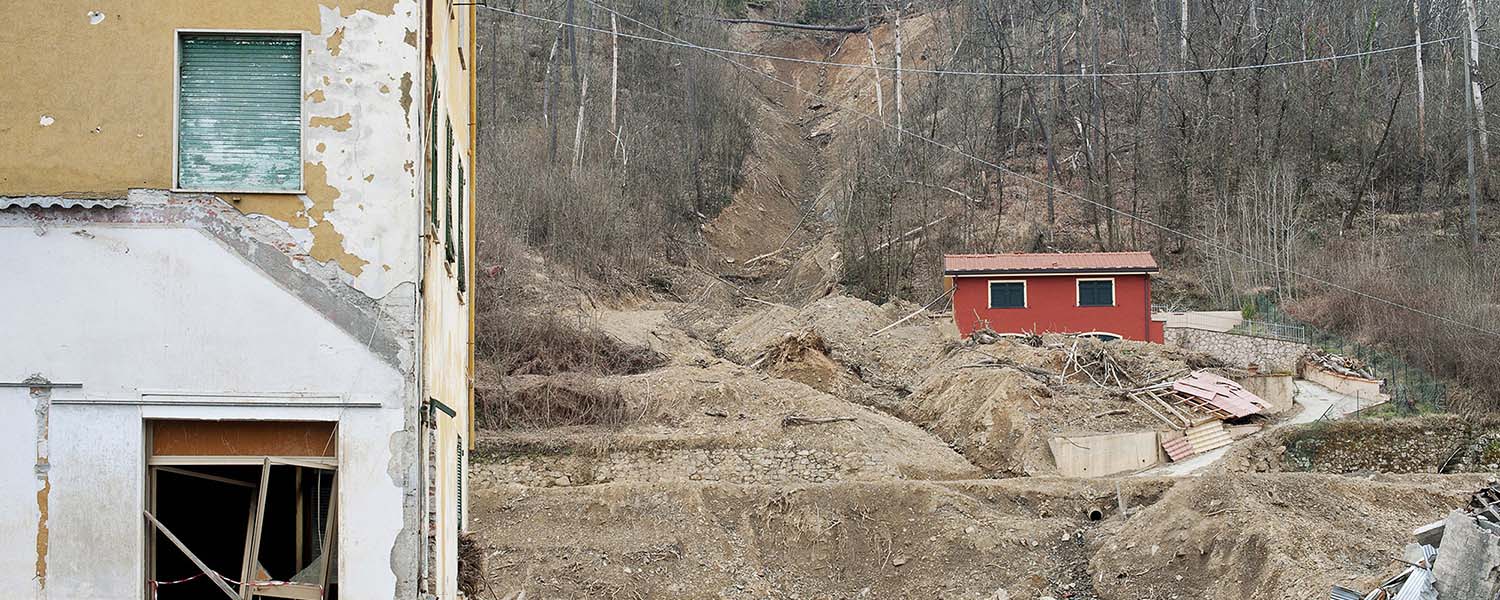Hydrogeological instability

Hydrogeological instability
During the autumn 2011 the emergence of hydrogeological instability returned powerfully on the front pages of newspapers in our countr; It happened due to the fragility of the area often aggravated by neglect of man.
On November 22 2011, a landslide in Saponara, Messina killed 3 people. on November 4 2011, in Genoa, 500 mm of rain fell in few hours, cause the overflowing of the river Bisagno and other minor streams causing six casualties. On October 25 2011, heavy rains have caused flooding in some rivers of the Lunigiana and Liguria, causing floods and killing 12 people.
In one month, the story of a massacre. As often happens in the Italian events we can talk about announce tragedy. In Genoa, for example, the disaster has occurred because “residential or industrial buildings” have been built on strips of land that are landslide risk. They have occupied the beds of rivers, blocking them with waterproof covers making artificial canal.
The risk
According to the first report on the Italian territory, created by the National Council of Geologists in the 2010, 6 million people live in the 29,500 km square considered high landslide risk.
1,260,000 buildings are landslides and floods risk; 6000 of these buildings are schools and 531 are hospitals. 5581 of the Italian towns are hydrogeological risk, the 70% of Italian municipalities.
The hydrogeological instability implies the risk of landslides, floods, flooding that in the last 50 years have caused more than 2,500 deaths.


























